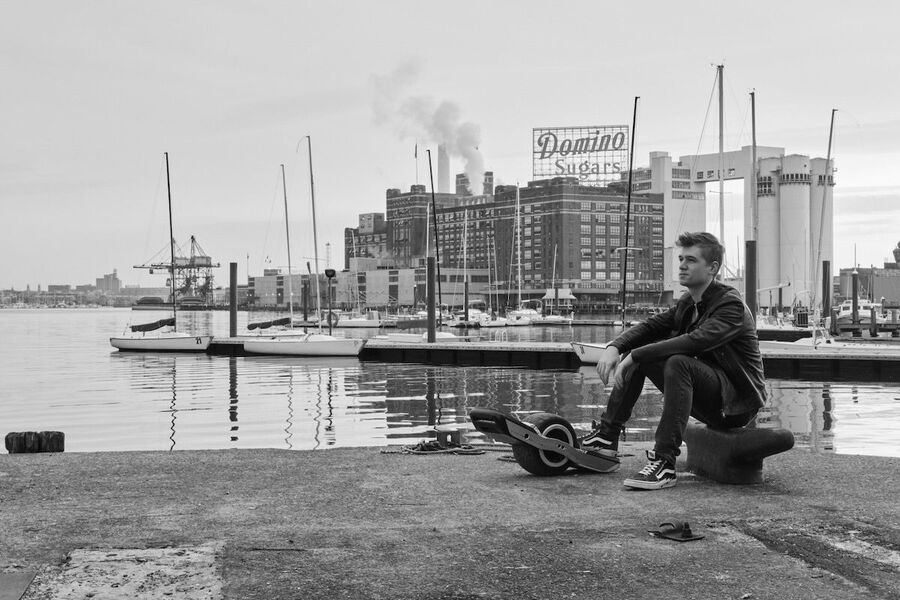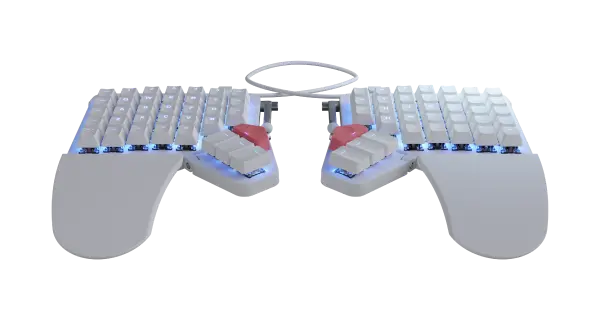The people who use our boards.
383 interviews since 2018
Cal
Moody
Senior Software Engineer
Who are you, and what do you do? What do you like to do outside of work?
Hi! I’m Cal, a software engineer, digital/film photographer, and Onewheel builder based in Baltimore, MD.
My development experience is primarily as a full-stack developer, building scalable enterprise full-stack web-based applications in React and Go. However, I find that life is more interesting when I can throw myself into the deep end of something I know nothing about once in a while, either personally or professionally. With this philosophy, I’ve been able to accumulate a broad range of experience from developing macOS/iOS applications, prototyping IoT systems, writing and modifying firmware for a variety of devices, or learning some DevOps to iron out some of the wrinkles my team might be facing. Learning is a skill that I make every effort to keep sharp!
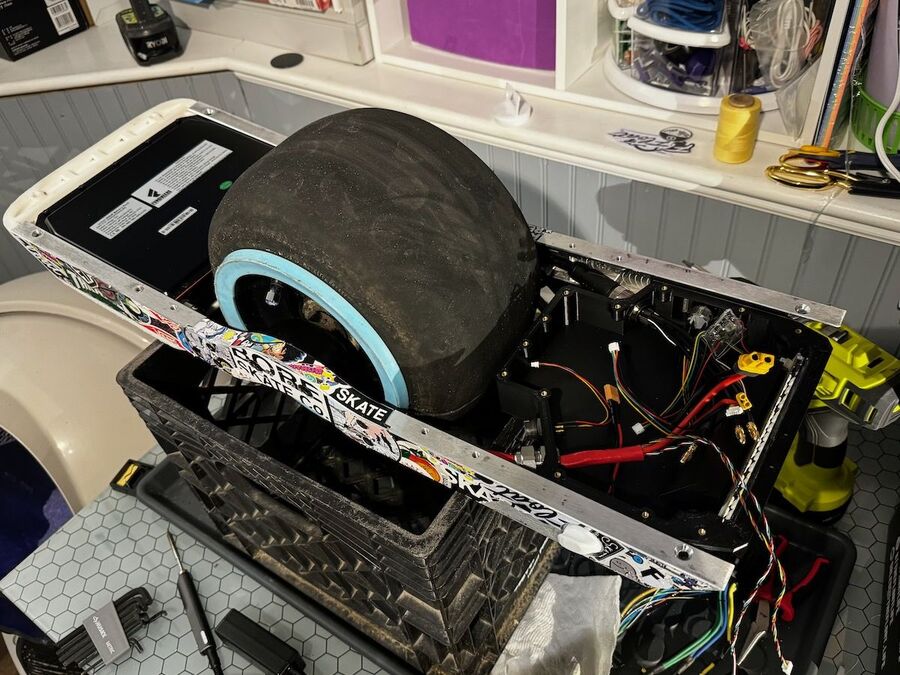
Off the clock, you can find me cruising around Baltimore or its surrounding trail systems on my Onewheel. Combining my technical skillset and my lifelong passion for skateboarding, the Onewheel was my perfect storm—a crazy electric skateboard driven by a computer that is completely kinesthetically controlled and is probably the closest thing I’ll ever have to a true hoverboard. I fell in love with the sense of freedom it gives you when exploring the city as well as the technical challenge of building, modding, and upgrading the board. My current board is a fully custom build—an absolute off-road 84V ripper running on open-source VESC firmware. 🤙🏼

What hardware do you use?
My workstation is constantly in flux, and designed to be that way. I stick to one screen and keep my peripherals small and easy to push out of the way if I am using my desk for something else, like film scanning or a quick solder repair. I don’t have a massive amount of room at my disposal, but I’ve set things up to make good multipurpose use of the space I have.
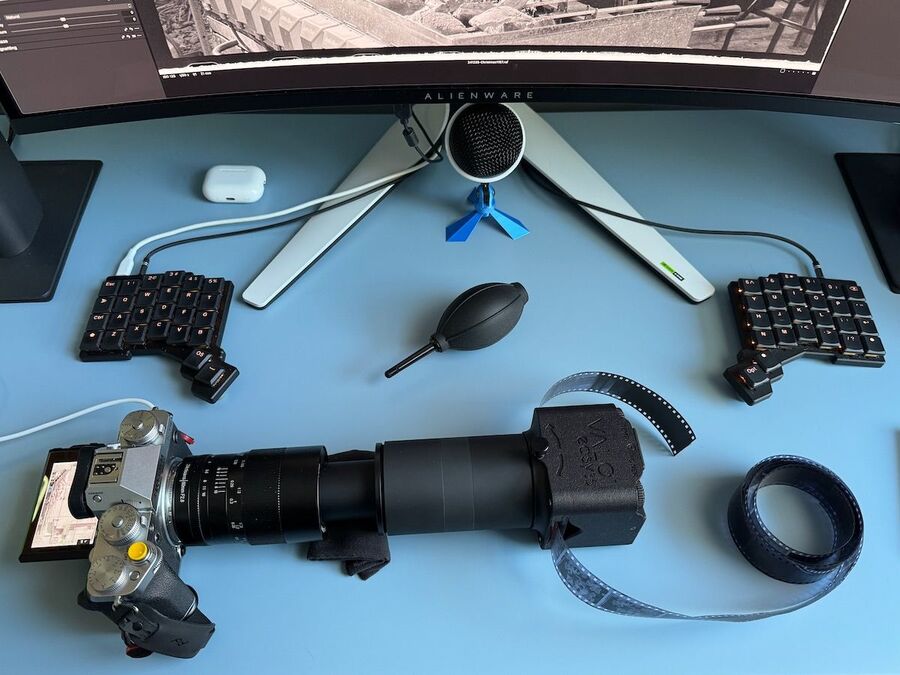
I find multiple screens distracting, so I run one big 32” monitor, the Alienware AW3225QF QD-OLED monitor. It’s the most gorgeous screen I’ve ever used—photography, movies, games, and even code editors look stunning on this thing. It can push absolutely absurd refresh rates for buttery-smooth interaction, which is very important to me—the hedonic treadmill pushes ever-onwards, and 120Hz is the new 60Hz! The screen is flanked by my Vanatoo T0 speakers for a great soundscape when I need to lock in and focus.

I currently have two 14” MacBook Pros: one for work, one personal. I’ve always preferred the smaller laptops in the lineup, as they’re just easier to travel with. I usually have a Linux gaming PC on the desk as well, but this is currently in upgrade limbo after my GPU died.
It would be unfair to not give a shoutout to my Ember mug here. I was given one of these as a gift because it was one of those things that seemed too absurd to buy for myself (come on, a coffee cup with an app?) but I use it literally every single day. Sipping away at coffee over the course of an hour and having it stay precisely at your favorite temperature is a luxury I didn’t know I needed. Also, Ember has solid no-nonsense customer support, so you can count on them if something goes wrong with your mug.

And what software?
I try to keep things simple when it comes to software. With a few exceptions, I start with the built-in tools and only branch out when the user experience or functionality falls short of what I need. I have a strong appreciation for FOSS, so I lean that way when I can, but I won’t deprive myself of the best tools for the job just because they’re paid.
I mostly develop in VSCode, but I will use GoLand for Go since it’s a pretty powerful editor (just be prepared to give it all your RAM). I also like to build websites in Remix, a great framework that keeps the original behavior of the web intact—I built my personal site calmoody.com with it and am using it professionally as well. If you’re in need of a modern web framework that gives you the good parts of React without abandoning the time-tested standards of the web, give it a shot!
For photography, I use Capture One, which I prefer to Lightroom because they still have the option to buy the software without a subscription. I also shoot with a Fujifilm X-T5, and Capture One has a slight edge in the colors of Fuji RAW files over Lightroom.
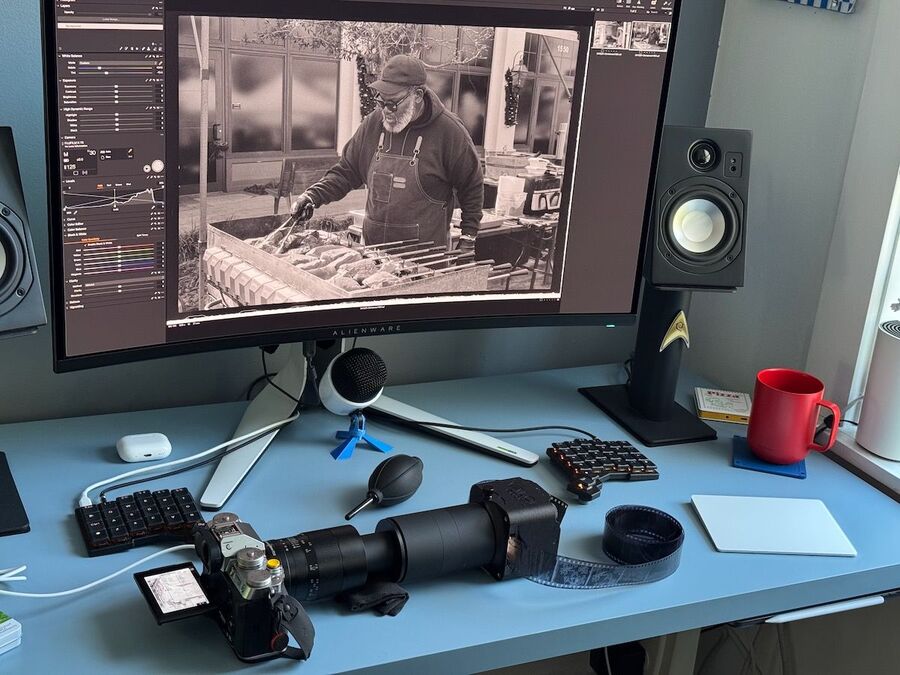
For CAD modeling and 3D printing, I use Shapr3D on my iPad and print with a BambuLab P1S 3D printer, which I use to make custom parts for my Onewheel builds. These are some of my more expensive tools, but they work so seamlessly that I find it’s worth the cost.

What’s your keyboard setup like? Do you use a custom layout or custom keycaps?
For several years I used Zealpc Zilent switches on the ZSA EZ Planck, a keyboard that I initially bought as a meme when talking with a coworker, but then accidentally fell in love with 😅. Designing a functional layout that didn’t alienate my normal laptop keyboard was a fun challenge.
Although I loved that keyboard to death, the ergonomics of the small keyboard led to a lot of shoulder-hunching throughout the day, and my cat Bean developed a habit of sprawling out on my desk, which led to the keyboard usually being off to one side. I had been considering a ZSA Moonlander, but it seemed too large for what I wanted on my desk. When the ZSA Voyager launched, I felt like ZSA had designed it specifically for me! Now, with the split design, Bean can lounge right in the middle of the desk if she so pleases.
That being said, I had a pretty difficult time adjusting to the Voyager. Cracking the code on a layout that felt intuitive was more of a challenge than it had been for the Planck, mostly due to the two-button thumb clusters. I kept finding myself pigeonholed with the modifiers I needed, and I took a break from the Voyager for a few months. Revisiting the layout with fresh eyes and a determination to make it work, I designed the Seven of Nine layout, which was recently featured by ZSA. This layout allowed me to finally click with the Voyager, and it is now my favorite keyboard and daily driver. Check it out if you want something that feels like a “regular keyboard, supercharged” with a cool game mode—or if you just like Star Trek!
I am running my Voyager with the Seven of Nine layout and stock keycaps. I tried loads of different switches, trying to recreate that Zealpc Zilent feel that I loved on my Planck, but nothing was quite satisfying enough until I discovered Sunset Tactile Choc switches. If you like thick tactile switches, these are the best on the market. (Hey ZSA, can you add these as an option for the Voyager during checkout? 😉)
What would be your dream setup?
Using one screen means that I don’t have to shift my mental model when I am working away from my desk on my laptop. There are a few things I want to add to my setup, though—a Thunderbolt dock to streamline cable management would be nice. I am also in the process of repurposing my old gaming PC into a homelab server so I can self-host some services like my website, a Pi-hole for DNS-level ad blocking, Hoarder for bookmark sharing, a NAS for my rapidly growing photo library (40 megapixel images take up a lotta space!), and possibly some personal Fediverse instances such as Mastodon.
This is about a dream setup though—so I’ll think outside the box for a moment. A future hope I have is that devices like the Apple Vision Pro and XR display glasses are the first iterations of an eventual “spatial computing developer environment” where you can have as many screens as you like positioned all around you, perfect resolution and refresh rate, all in a comfortable form factor that isn’t so “wired in” as it is today. Humans think spatially, and I suspect there is a whole ocean of new and interesting design to explore with a system like that. If that’s the future we want, we gotta build it!
